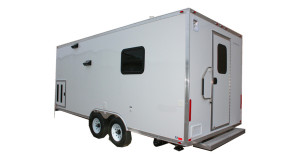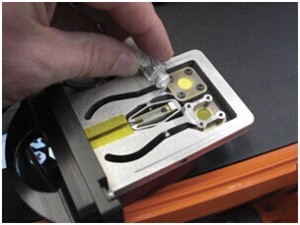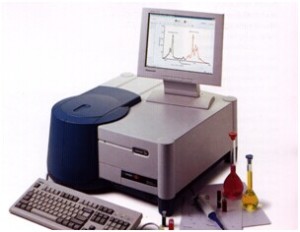Wellsite Geochemistry Logging (WGL) service brings advanced, lab-based formation and resource evaluation technologies to the wellsite, enable us faster and more informed exploration and reservoir development decisions.
WGL service mainly includes source and reservoir rock thermal extraction and pyrolysis analysis, XRD mineralogy analysis and Quantitative Grain Fluorescence (QGF) and Quantitative Grain Fluorescence on Extract Fluorescence (QGF-E) analysis. These analysis could provide fast and depth-profile results which indicate properties of source rocks and reservoir rocks.
ADVANTAGES:
Source and reservoir rocks analysis provide following measurements and applications:
-
Providing measurements of Organic Carbon content, Oil content, Remaining hydrocarbon, Thermal maturity and Organic CO2 on source rocks;
-
Providing measurements of Oil yields, Viscosity and API prediction, Tar, bitumen and pyro-bitumen content and Pay zone identification;
-
Identifying bypassed pay zone by analyzing cuttings while drilling and assessing reservoir potential earlier in the development process by providing an estimate of how much oil resides in the reservoirs for all type of reservoirs;
-
Optimizing hydraulic fracture placement by pinpointing the location of oil in shale plays and tight sand;
-
Identifying sweet spot to determine the best location in the heavy oil column for heavy oil reservoir.
X-Ray Diffraction (XRD) analysis provide direct measurement of formation mineralogy and following applications:
-
Direct measurement of mineralogy for accurate lithologic assessment and more informed stratigraphic correlations;
-
Optimizing vertical completions or lateral drilling target by identifying the most brittle interval which is most closely associated with hydrocarbon bearing intervals for unconventional resources;
-
Determination of feldspars, total clay and carbonate minerals in sandstones, allowing better understanding of provenance, diagenetic history, porosity evaluation and reservoir quality;
-
Determination of calcite, dolomite and siderite in carbonates, permitting better understanding of diagenesis and reservoir quality, as well as constraining log interpretations;
-
Direct measurement of mineralogy from cuttings samples requires no downhole tools to provide accurate lithologic assessment and brittleness, in near real-time, with no capital risk.
Quantitative Grain Fluorescence (QGF) and Quantitative Grain Fluorescence on Extract Fluorescence (QGF-E) provide both UV and visible spectral information of samples and direct detect current and palaeo-oil zones by measuring the intensity of fluorescence from ultraviolet light-excited hydrocarbons sealed in fluid inclusions and at the surface of siliciclastic rocks. QGF and QGF-E cold be used to investigate oil migration and petroleum charge history using core and cutting samples from petroleum exploration wells. The technique is most valuable when there are a number of closely spaced samples across the reservoir interval of interest.
-
Uses of QGF-E (siliclastics and carbonates) detecting current oil zones where oil-based drilling muds have been used or where there are indeterminate oil shows and delineating oil-water contacts.
-
Uses of QGF (siliclastics) detecting palaeo-oil zones and delineating palaeo oil-water contact..
Wellsite Geochemistry Logging equipment package
-
Trailer (WLT20-G)for holding on equipment which include UPS power and safety monitoring;

WLT20-G
-
Shale Analyzer for organic geochemistry logging which provide measurement of S1, S2, S3, Tmax, TOC, MIC and calculation on HI, OI, PI as well as other related parameters;

Shale Analyzer
3.Terra XRD mineral analyzer for mineralogy logging which provide measurement of minerals in rocks;

Terra XRD Mineral Analyzer
4. Cary-Eclipse spectrophotometer for measurement of fluid inclusion and extraction fluorescence in rocks which provide QGF and QGF-E parameters;

Cary-Eclipse spectrophotometer
5. Digital microscope photography with white and UV light;
6. Other integration with customer requirement.




